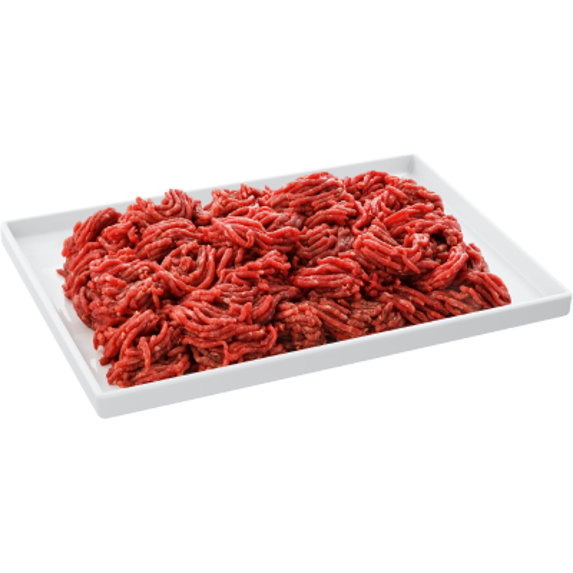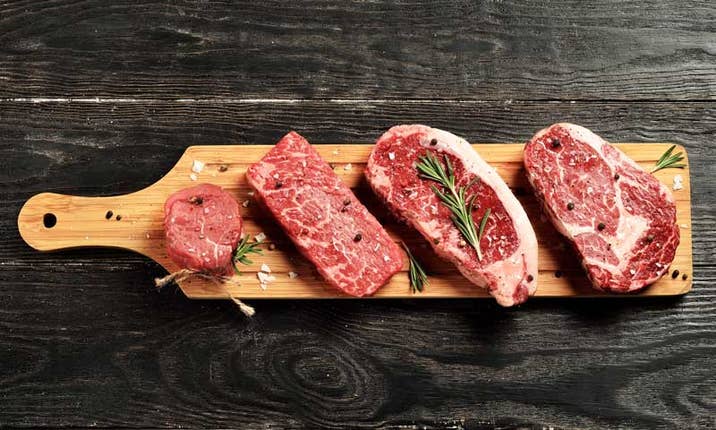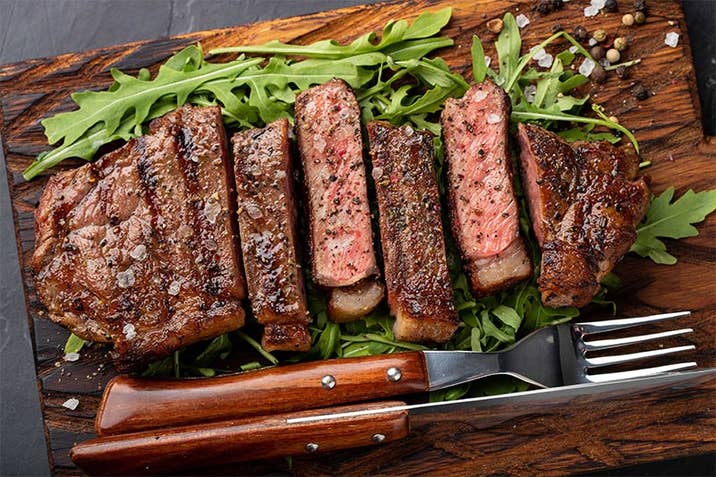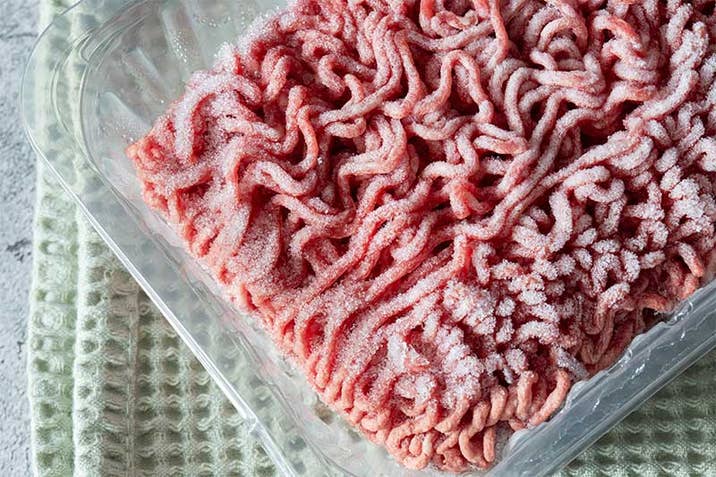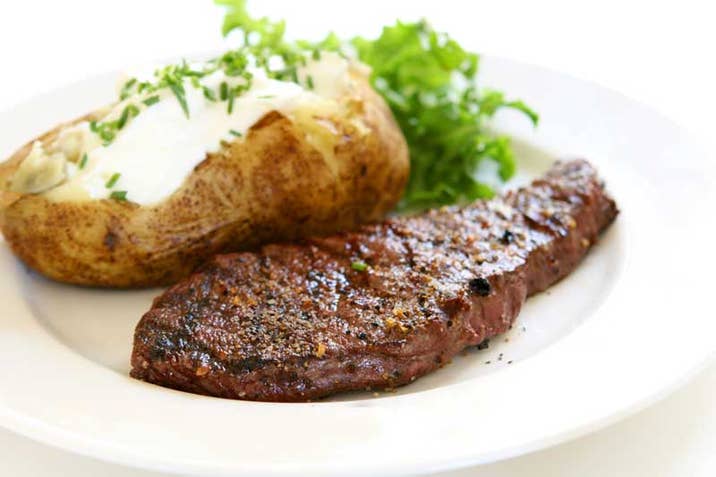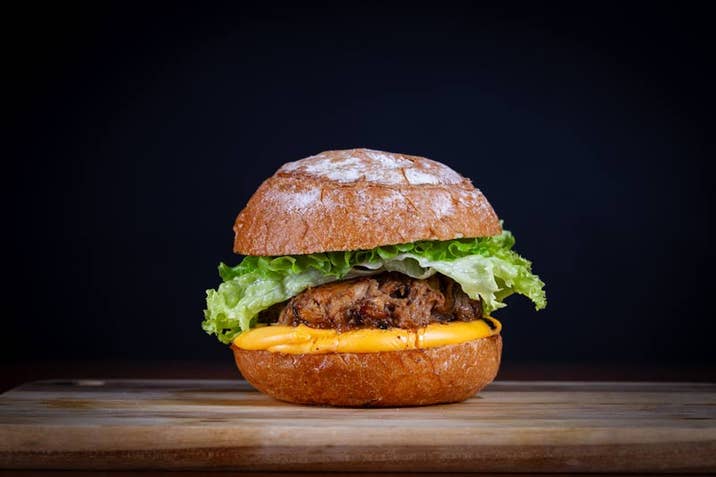How to Cook the Perfect Sirloin Steak
How to cook the perfect sirloin steak
Make restaurant-quality sirloin steak every time

Sirloin steaks are one of the tastiest, juiciest cuts of beef and are quick and simple to cook at home. We show you how to make perfect, restaurant quality sirloin steaks every time and what to serve with them.
What cut of beef is sirloin?
Sirloin steaks are cut from an area of the cow between the loin, which is usually tender, and the round, usually tougher. Sirloin are in the middle: not as tender as cuts from the loin, more tender than cuts from the round and rump.
Types of steak from the sirloin
Type of steak: Top sirloin steak
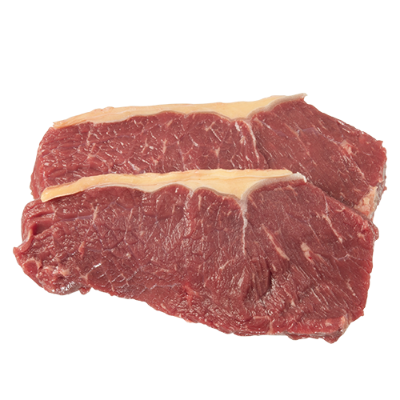
Top sirloin steak is very common in supermarkets and butchers in New Zealand where we tend to refer to it simply as as 'sirloin steak', It is a boneless, is a lean cut with minimal fat marbling and has the perfect balance of tenderness and beefy flavour.
Type of steak: Tri-Tip steak
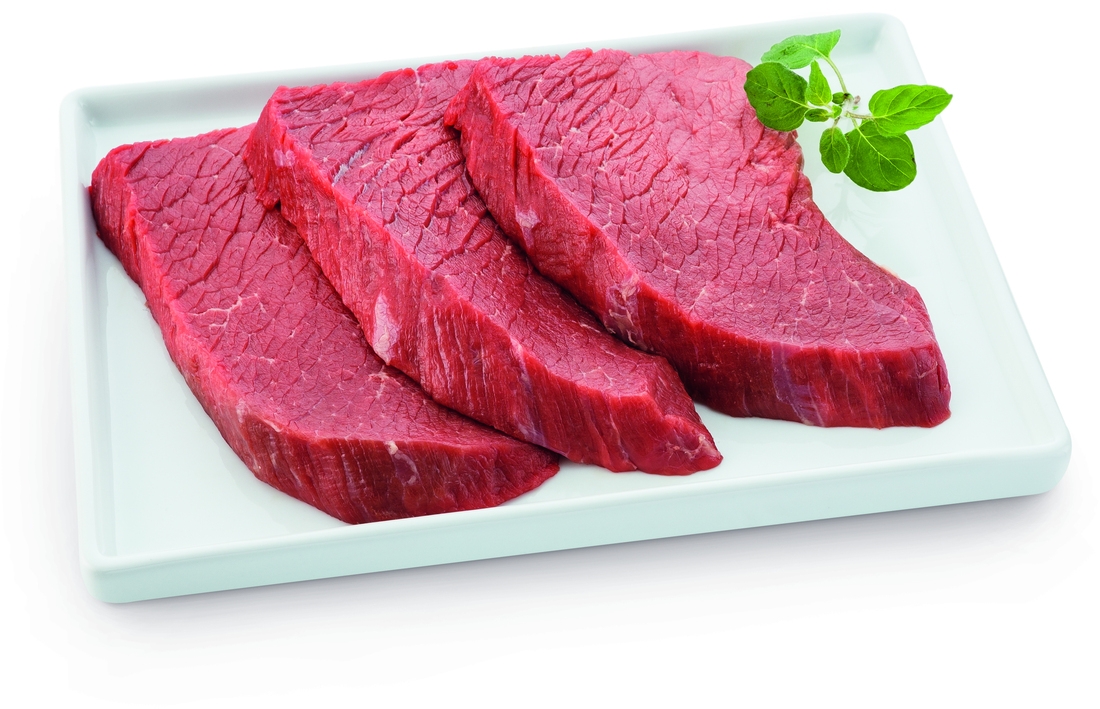
Tri-tip steak has a unique triangular shape (compared to the top sirloin which is more rectangular). It is typically more tender than top sirloin and, due to its higher fat content, has a more complex beef flavour.
Tip: If you're buying a whole sirloin and want to cut into individual steaks, the ideal thickness is 20 mm thick or one inch. This is perfect for pan frying as the steak is thin enough to be heated evenly throughout. For thicker steaks, opt for searing in a skillet and finishing off in the oven.
Related: Beef and steak shopping guide
Tips for buying sirloin steak
When buying sirloin steak, look for a rich red colour. It should appear moist, cold and firm to the touch.
If you plan to refrigerate the steak, aim to eat it before the 'Best before date'. Otherwise, steak can be frozen for up to 6 months, just remember to defrost it before cooking to get the best flavour.
Sirloin steak prices
Sirloin steak at Pak ‘n Save costs approximately $30 per kilo. Compare the prices of various beef cuts here.
It's a great idea to buy steak in bulk when it's on special, then freeze it until needed. Find out how to save money on meat here.
Related: What to look for when buying beef
Related: Which tastes better: frozen or fresh beef?
Sirloin steak cooking methods
There are a number of popular cooking methods to cook steaks and they all work well (with their pros and cons).
Pan frying/searing
Method: This is a simple, one-pan method. Simply cook your steak in a frying pan in a little oil. Pros: Frying creates the flavoursome crust we are looking for. It’s also a reasonably quick way of cooking steak while retaining control over the ‘doneness’ (providing your steaks aren’t too thick). Cons: This method can produce a lot of smoke, so watch out! You also need to be careful to avoid burning the outside of your steak. Finally, it can be difficult to achieve an even cook with the desired level of ‘doneness’ without overcooking the outside, making it tough. This is more of an issue if your steak is on the thicker side.
Grilling on a gas or charcoal BBQ
Method: Out in the sun, cooking your steaks over a gas or charcoal open flame.Pros: Who doesn’t love a barbie? This method gives a smoky flavour (especially if you go old-school and use charcoal), the grill marks look great, and it’s relatively fast (less so with charcoal).Cons: All the usual barbecue-related challenges: weather and cleaning up being the two main ones. It can also be more difficult to control the temperature (more so with charcoal than modern gas barbecues). It’s hard to avoid flare-ups when fat drips onto the flame/coals which can burn the meat.
Searing in a heavy skillet then into the oven
Method: This is a two-step process. First, you sear the steak in a hot pan oven-proof pan or skillet to develop a crust. Then you finish it off in a preheated oven until the meat is cooked to the desired ‘doneness’.Pros: As with pan frying, you get a delicious, meaty crust. Finishing the cook in the oven provides nice-and-even cooking and a good level of control over doneness. This is the preferred method for thicker steaks.Cons: This method requires a smidge more planning as you need to preheat the oven in advance, and have an oven-safe pan to hand.
Roasting in the oven
Method: Very straightforward: pop your steak in the oven at a medium temperature (around 180 degrees centigrade) until it reaches the desired doneness.Pros: This is a pretty hands-off approach which makes it convenient, particularly if you have other things to think about while you cook (like kids). It is also a particularly good method for thicker cuts of meat.Cons: You’ll miss out on the yummy crust that you get when you sear or grill the steak.
Air fryer
Method: Air fryers have become very popular in recent years. Just pop your steak in the air fryer, being sure to check regularly so it doesn’t get overcooked.Pros: As with oven roasting, this is a relatively quick and easy method of cooking steak and uses less, if any, oil compared to pan-searing. And cleaning up is a breeze!Cons: You may not achieve the same crust as with searing in a pan and you might get less even cooking than using the oven.
Cooking tips
We’re biased towards pan frying steaks and then finishing off in the oven. It really is the best way to get a super-juicy steak with that delicious crust.
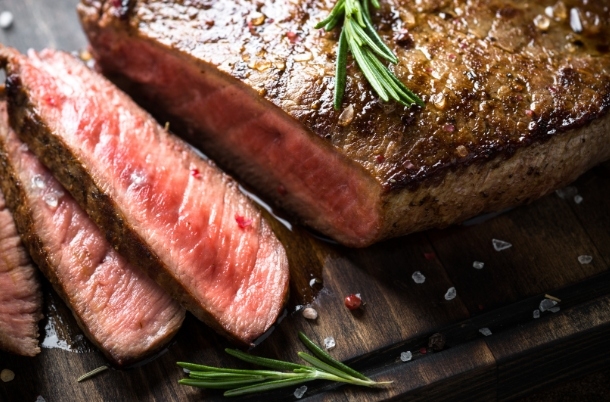
Follow these tips for the best crust and perfect, even cook throughout.
- Bring your steaks to room temperature before you start cooking. This can often take up to 30 minutes,so plan ahead.
- Pat both sides of the steak with a paper towel to remove moisture. This is critical for a good crust.
- Preheat your oven to a medium heat (180 degrees centigrade) before you start frying.
While cooking.
- Make sure you have an ovenproof pan or cast iron skillet. This helps to maintain an even cooking temperature.
- Add salt to the steaks just before you place them in the pan. This helps to retain moisture inside the meat. Black pepper can burn at high temperatures so add it once the meat is resting.
- Use vegetable oil or a similar oil with a high smoke point. Don’t dry-fry the steak!
- Get the pan to a high heat and then place the steaks in the pan.
- Sear the steaks quickly on each side. Resist the urge to shuffle the steaks around the pan. Turn them when you can see a nice brown crust.
- Don’t overcrowd the pan. If there are too many steaks in the pan they might begin to ‘sweat’ rather than sear.
- If you are going to finish in the oven, transfer the skillet to the oven.
- Sirloin steak is best served medium rare but you do you! If you are finishing in the oven, a rough rule of thumb for a 20 centimetre medium rare steak is 5 - 8 minutes. Use a meat thermometer or the touch test so you know when to stop cooking (see below).
- The meat will continue to cook while it rests so, if in doubt, take the steaks out of the pan/oven a little earlier.
Once cooked.
- Remove from the oven (or pan) and place the steaks on a clean wooden board. Liberally, grind fresh black pepper over the steaks and then cover them with a clean tea towel. Leave the steaks to rest for 5 to 10 minutes to allow the meat fibres to relax. (The longer the cooking time, the longer the steaks should rest.)
- Once rested, slice the steaks against the grain, plate up and enjoy!
Seared Steak with Summer Spaghetti
How do I know when the steak is ready?
There are three trusted ways to determine if your sirloin steak is ready. They are time, temperature and feel.
1. Using time as an indicator of when your sirloin steak is doneKnowing how long to cook sirloin steak will help you to cook a great steak. Set a timer and closely watch the steak until it reaches the desired time (See table below)
2. Using internal temperature to indicate if your steak is readyUse a meat thermometer to measure the internal temperature of the steak. This removes the guesswork and is the most accurate way to measure if it's done.
3. Using the chefs-preferred touch test Professional chefs use touch to judge if a steak is done or if it needs more cooking. This is a method you can use at home to feel the degree of softness or firmness in the meat. We suggest you make sure your hands are clean before touching the meat. This exercise involves bringing a specific finger into contact with the thumb and then feeling the fat pad below the base of the thumb and comparing it with the feel of the steak.
| Steak preference | Time on each side | Internal temperature (degrees Celsius) | Touch |
| Rare | 1.5 minutes | 49-51 | Index to thumb |
| Medium rare | 2 minutes | 55-57 | Middle finger to thumb |
| Medium | 2.5 minutes | 60-63 | Ring finger to thumb |
| Well done | 4-5 minutes | 71 | Pinky finger to thumb |
What can be served with sirloin steak?
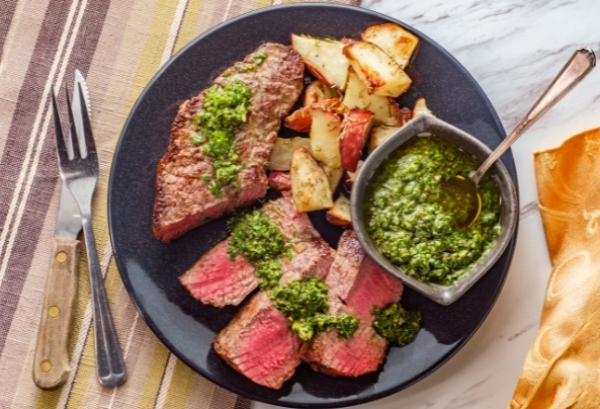
You can use a sirloin steak marinade to flavour the meat before cooking and this is particularly successful when cooking on the grill. Butter is a perfect topping for steak and can be flavoured with garlic herbs or spices. Here are some other ingredients to serve with your steaks:
Sirloin steak nutrition
100 gram serving of sirloin steak provides approximately
- Calories: 146
- Protein: 20.9 grams
- Total fat: 7 grams of
- Saturated fat: 2.5 grams
- Carbohydrates: 0 grams
- Sodium: 45 mg
Is sirloin steak good for you?
According to Heart Foundation NZ you can safely eat up to 350g of lean red meat a week as part of a healthy diet. Steak is a good source of high quality protein and provides all of the essential amino acids the body needs to promote muscle growth, repair tissue and digest food. Beef is a good source of vitamin B12, niacin, selenium iron and zinc which protects the immune system and reduces your risk of anaemia.
More from the beef and steak guide
1 / 0
